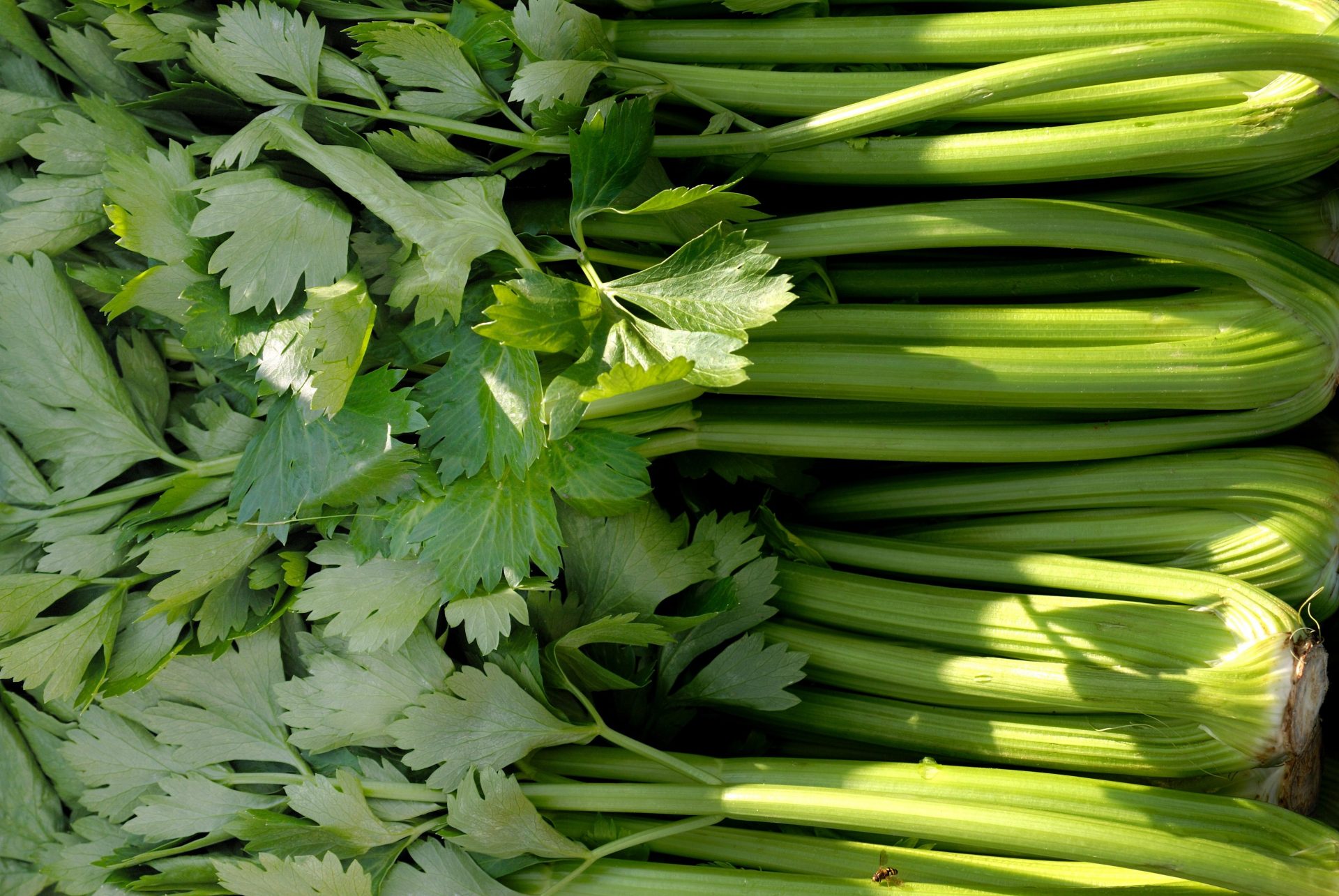Real Food Encyclopedia | Celery
Celery (Apium graveolens) is a ubiquitous ingredient in many cuisines, but tends to stay out of the spotlight — an eternal supporting player, commonly found with dip on a vegetable platter or alongside a basket of Buffalo wings. Still, celery stands on its own in many ways: Its crisp, juicy, fibrous stalks pack surprising amounts of flavor, which becomes mellow and aromatic when the vegetable is cooked. It’s no wonder it’s an essential ingredient in mirepoix and other fragrant bases for soups, stews and sauces. This versatile plant varies wildly throughout the world, and you’ll be surprised what you can do with it.
Fun facts about celery:
- Wild celery, native to the Mediterranean, was used more for its seeds than its somewhat bitter stalks. It took several centuries of breeding to get the version we see in U.S. supermarkets, which is much more enjoyable to eat raw.
- In the Victorian Era, celery was somewhat of a fad, served plain, braised, in salads, au gratin and many other ways. There was even a style of glassware called the “celery vase,” designed specifically to create a celery-based centerpiece for the table.
- Celery and celery juice are thought to be a hangover helper in various folk customs. This may explain why a stalk of celery is often found garnishing that most famous of hangover cures — the Bloody Mary.
- Celery is part of the plant family known as Umbelliferae, along with carrots, parsley and parsnips.
What to look for when buying celery
Pascal celery, the variety most readily found in the U.S., has tall, thick, light green stalks. It is typically sold in bunches; look for unblemished celery that is firm and crisp. Used primarily for its stalks, it’s commonly sold with few leaves, though they are also flavorful.
Pascal celery is sometimes “blanched,” a process wherein the stalks are covered with soil (or paper) or as they grow, prohibiting the production of chlorophyll. The process can reduce the nutritional value of the stalks, but also their bitterness, and helps the plant withstand heavy frosts. Farmers today can also grow “self-blanching” celery, or Golden celery.
The celery most commonly grown in East Asia (A. graveolens var. secalinum, also known as Chinese celery or “leaf celery”) has much thinner stalks and is more pungently flavored. Another variety, A. graveolens var. rapaceum, is grown for its edible root, or celeriac. Celery seeds are also harvested for use as seasoning.
Sustainability of celery
Celery places considerable demand on local water supplies: It’s thirsty and unable to withstand very hot temperatures, and takes 130 to 140 days to mature. Without enough water, celery stalks can become tough and stringy. Much of it is grown in California — as the state faces more intense droughts brought on by climate change, it calls into question whether such water-intensive crops really belong there.
Pesticides
Many commercial farms rely on pesticides to bring celery to harvest; the vegetable ranks 15th of 46 on the Environmental Working Group’s 2023 Shopper’s Guide to Pesticides in Produce. Buy organic celery to better avoid possible pesticide residues.
Seasonality
Celery is best grown in milder climates and is usually sown in spring or fall. Seeds are slow to germinate, and are often started indoors before transplanting in early spring or late summer to ensure a steadily cool growing season.
Geography
Celery grows best in moist sandy and clay soils, requiring access to much water during its long growing season. Most of the roughly 1.8 billion pounds of celery produced in the U.S. each year (as of 2019) is grown in California, which produces around 80 percent of the total supply. Florida, Arizona and especially Michigan are also notable producers. The U.S. also imports some celery, mostly from Mexico.
Eating celery
Celery features fibrous strands along its length, and has a mild, herbal aroma. Its distinctive, slightly sweet flavor is indispensable in many savory dishes, and it is often sauteed with other aromatics like carrots and onions.
Storing
Keep celery refrigerated until use, preferably covered to preserve its moisture (though an airtight container is not necessary). If celery becomes limp, simply trim at the base and place stalks in a glass of water in the refrigerator until crisp again.
Cooking
Celery is often eaten raw, cut into sticks for crudités or ants on a log, or thinly shaved with a mandoline to break up its fibrous strands before adding to salads. Celery leaves are very flavorful and can be used as an herb both fresh and dried, much like parsley, a close relative. Both stalks and leaves are a popular choice for juicing.
Celery can also be cooked, famously in Thanksgiving stuffing but also as part of a mirepoix for braises and stews or the “trinity” in Creole and Cajun dishes like gumbo and jambalaya. Chinese celery is commonly used as an addition to stir-fries. It also makes for a tender, savory cooked vegetable dish on its own. Hold onto the leaves, root ends, thick bases and other scraps to use for making stock.
Nutrition
Celery is low in calories and has a high water content, and it also provides fiber, potassium, Vitamin K and antioxidants. It has also been found to have a natural diuretic effect.
Top photo by Patrick Hermans/Adobe Stock.


